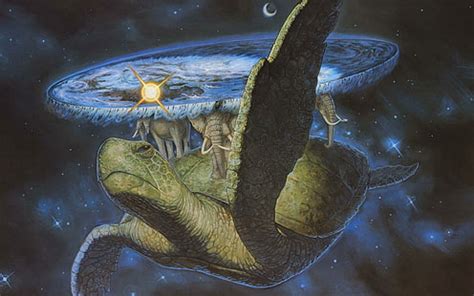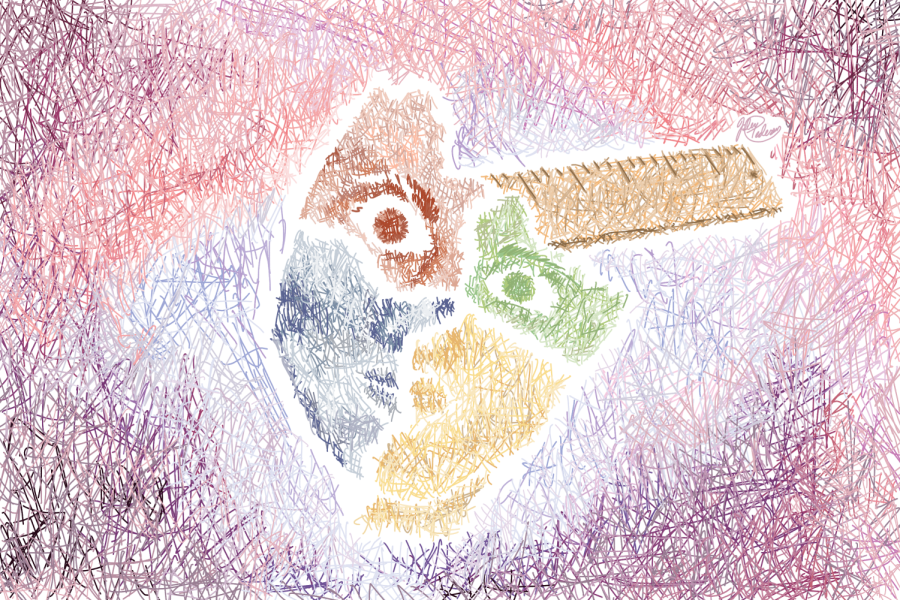Riding on the back of a giant turtle are four giant elephants whose backs support the entirety of the known world: a single, giant disk. In Discworld, the magic behind this universe is not in the setting itself, but rather how it was portrayed by the author, Terry Pratchett.
Born on April 28, 1948, Pratchett lived to be 66 before he died in 2015 after a long battle with Alzheimer’s. During his lifetime, he wrote over 50 books, 41 of which took place in Discworld. He was also a co-author of the bestselling novel “Good Omens,” alongside Neil Gaiman.
When first writing Discworld, Pratchett desired to create a rich and expansive society filled with innovation. However, the reality of many fantasies is that they are limited by the protagonist’s experiences. In longer series which follow a single storyline, this type of setup is ideal. But when Pratchett wrote Discworld, he did not write a single story. Between a multitude of subseries, the casts vary widely. Some stories follow the City Watch, those who have dedicated their lives to protecting the people in the diverse city of Ankh Morpork, while others follow the character Death, his family, and apprentice. Each of these perspectives exist to show different facets of a larger universe. They give insight into not just one group’s point of view, but also those of people who are so different that their paths would never cross in a single story.
Pratchett’s writing is often classified as absurdist, a description that I believe is accurate. However, because of this description, potential readers often believe that his stories are difficult to understand or even completely nonsensical. While much of the content in his stories is outlandish, when immersed inside his writing, it feels perfectly logical. Inside his world, you can experience mysterious phenomena, such as the tower filled with sentient letters that caused the death of countless postmasters in “Going Postal.”
Pratchett wrote his books in a way that helps you believe that the events that occur in them are commonplace. Although some of these are explained scientifically, in ways that I did not often understand, many of them leave the characters just as confused as the readers, and still others are easily grasped by the characters but fly over the reader’s head. Since Pratchett does not walk you through everything, it truly feels like you are peering into another world and gradually, through experiencing the stories told, learn to understand it. The difference between Pratchett’s work and most contemporary fantasies is how much he trusted the reader’s intelligence. Outside of the main series, Pratchett published a group of four books titled “The Science of Discworld.” Again, instead of attempting to fully explain the world he created, he showed it to his readers piece by piece and dedicated time to describing his creative process with those who were still eager to learn more.
Pratchett’s books are a great combination of his unique humor and knack for world building. They are books for people who want to lose themselves in an entirely new place. However, knowing which book to start with can pose a barrier to entry that is difficult for new readers to cross. In truth, there are multiple places where one can begin. The most obvious are the first books released in the Discworld franchise, such as “The Color of Magic” and “The Light Fantastic.” However, there are a good number of standalones as well. Reading the books in the order they were published is not something that I would recommend. For instance, published immediately following “The Light Fantastic” was “Equal Rites,” a book that takes place in an entirely different subseries. In order to avoid confusion, it is best to pick a subseries and stick to it until the time comes to move onto the next one.
In the franchise, there are six subseries to choose from:
- The first series follows the belligerent wizard named Rincewind, who always seems to find himself caught up in an adventure no matter how often he claims to loathe them. The books it contains are “The Color of Magic,” “The Light Fantastic,” “Sorcery,” “Eric,” “Interesting Times,” “The Last Continent,” and “The Last Hero” comic.
- The second series is about Death himself. It begins with the book, “Mort,” and continues with “Reaper Man,” “Soul Music,” “Hogfather,” and “Thief of Time.”
- The third series follows a group of lonely witches in the books “Equal Rites,” “Wyrd Sisters,” “Witches Abroad,” “Lords and Ladies,” “Maskerade,” and “Carpe Jugulum.”
- The fourth series follows AnkhMorpork’s city watch and is complete with werewolves, trolls, and vampires in the books “Guards! Guards!,” “Men at Arms,” “Feet of Clay,” “Jingo,” “The Fifth Elephant,” “Night Watch,” “Thud!”, and “Snuff.”
- The fifth series follows Moist von Lipwig, a former con artist turned postmaster. It is a trilogy that contains the books “Going Postal,” “Making Money,” and “Raising Steam.”
- The sixth series tells the story of Tiffany Aching, a young girl who becomes a witch to protect her home in the books “The Wee Free Men,” “A Hat Full of Sky,” “Wintersmith,” “I Shall Wear Midnight,” and “The Shepherd’s Crown.”
If you are unable to decide where to begin, there is a quiz available on the Discworld Emporium that can decide for you.
The Discworld franchise is, in my opinion, an excellent anthology of literature. It is clear, when flipping through the pages, how much attention to detail Pratchett imbued the world with. For him writing was not simply a hobby, nor was it his job. It was his life.















Cathy • Mar 17, 2024 at 1:25 pm
I had all of tPratchett’s books til i lost my home and all in it in 2016. Been mostly homeless since, now in a Txxzz nursingwarehouse, 3 years.
I’ve been listening to all of his audiobooks over and over, at least a dozen times each so far. There’s Always something new, cameos from other characters, literary puns, clever twists of ideas. They are so compassionate, inclusive and witty that they he keep my mind and heart open, and I’m eternally grateful❣️❣️❣️